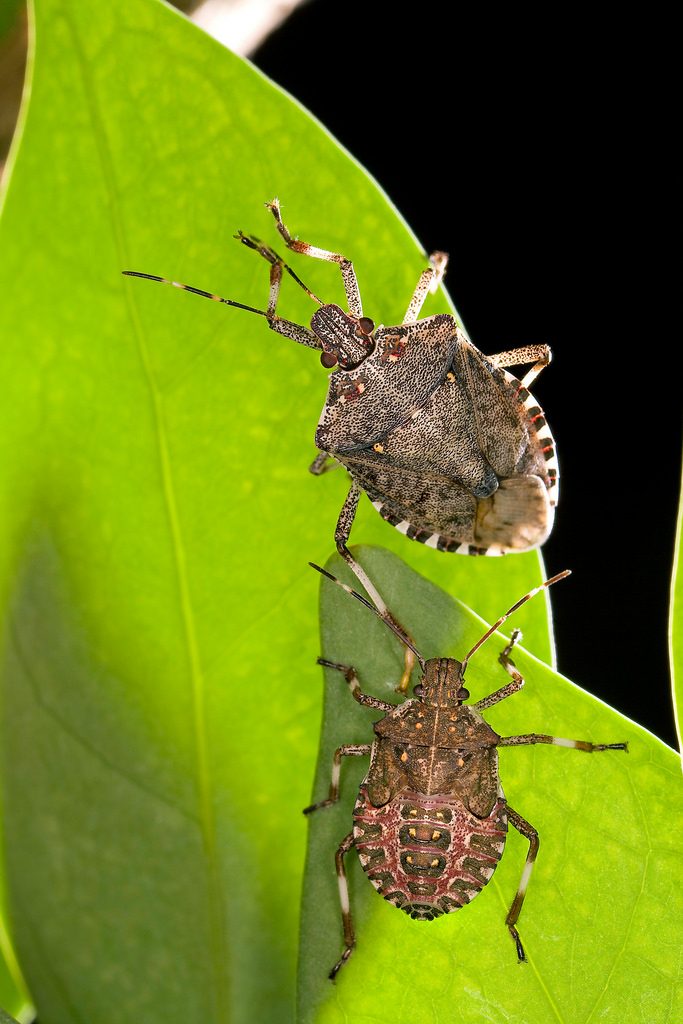
Stink bugs get their name from the unpleasant odor they produce when they are threatened. It is thought that this odor helps protect the bugs against predators. Some species can actually spray the chemical several inches.
More than 200 kinds of this pest are native to North America and feed on plants, fruits, and crops, making them a threat to farms and gardens.
This pest seeks out comfort – especially warmth – and knows when winter is coming. This can pose an enormous problem for homeowners when they seek shelter indoors from the cold.
Because they attack plants in swarms, they can do extensive damage quickly. In 2010, the stink bug epidemic caused over $37 million in damages to mid-Atlantic farmers. Their favorite crops tend to be grapes, soybeans, apples, peaches, peppers, and tomatoes.
Their presence is causing a huge loss in the trade business. Recent news reported is:
Stink bug discovery affects imports, trade deficit
By Rebecca Howard │December 20, 2018

New Zealand’s trade deficit narrowed in November as a stink bug discovery reduced imports, while exports rose sharply.
The November deficit was a seasonally adjusted $402 million versus a deficit of $707 million in October, Statistics New Zealand said. The annual deficit was $5.4 billion, also in line with expectations.
November imports eased 0.6 per cent on the year to $5.8 billion with the largest fall being in passenger motor car imports, down 35 per cent due to a delay in final unloading of one cargo ship in November.
Putnam: Stink bugs likely to ‘get a lot worse,’ expert says
Judy Putnam, Lansing State Journal | January 11, 2019

But the bad news is they’re not going away, and they continue to be a threat to fruit trees and other crops. Farmers are fighting them with traps, lures
Brown marmorated stink bugs were first spotted in Michigan in 2010, meaning “we’ve just started,” Russell said.”There’s a good chance they’re going to get a lot worse.”
The MSU Invasive Species Network used to ask people in mid-Michigan to report sightings. That’s ended because they are pervasive across the Lower Peninsula.
In agricultural sector, farmers use insecticide-treated netting or predatory insects to control stink bug population. Homeowners try their best to keep the bugs away from getting inside in the first place but even when they do, they apply an insecticide as a perimeter treatment or even try some home remedies.
But how effective are these?
Isn’t there any better and permanent solution to the nuisance caused by them?
In such a situation an effective method is needed which provides protection from the menace caused by these stinkbugs and hence C Tech Corporation has introduced an insect aversive repellent named CombirepelTM.
CombirepelTM works on the mechanism of repellency. It temporarily inhibits the mating cycle of the insects. The product impairs the ability of the insects to reproduce, that is the insects will not lay eggs or the laid eggs will be infertile. The product causes feeding disruption in an insect by triggering an unpleasant reaction within the insect which might try to feed on the application. The product temporarily blocks the reproduction system of the insects by hindering the release of the vital hormones for growth.
Masterbatch is to be incorporated with polymers while processing them and can be used for producing agricultural film, pipes, wires and cables, polymeric parts for agricultural utilities, polymer sprinklers. The wires and cables used for household appliances can also be incorporated with the masterbatch.
The liquid concentrate is to be mixed with paints in a proper ratio and can be applied to interior and exterior of houses, offices, areas of mass transits etc. Also, the concrete walls around the farms can be painted in the same way.
Since the stinkbugs are found in the areas like bookcases; under beds and sofas; in cracks under or behind baseboards, window and door trim; and in attics, we need to repel them from such places. Our product in the form of lacquer can be applied on wooden applications to which the pests are attracted the most. The lacquer is compatible with a variety of surfaces like metal, polymer, ceramics, wood, concrete etc.
Our newly developed product in the form of a spray can be sprayed by anyone. It can be sprayed indoor, outdoor, near the wooden articles, doors
CombirepelTM is the best protection against the Stinkbugs!
Contact us at technical.martketing@ctechcorporation.com to get best solutions on pest nuisance
Also, visit our websites:
http://www.ctechcorporation.com/
http://www.rodrepel.com/
http://www.termirepel.com/
http://www.combirepel.com/
Follow our Facebook pages at:
1] https://www.facebook.com/Combirepel-411710912249274/
2] https://www.facebook.com/Termirepel-104225413091251/
3] https://www.facebook.com/Rodrepel-120734974768048/
Follow us on our Twitter pages at:
1] https://twitter.com/rodrepel
2] https://twitter.com/termirepel
3] https://twitter.com/combirepel
